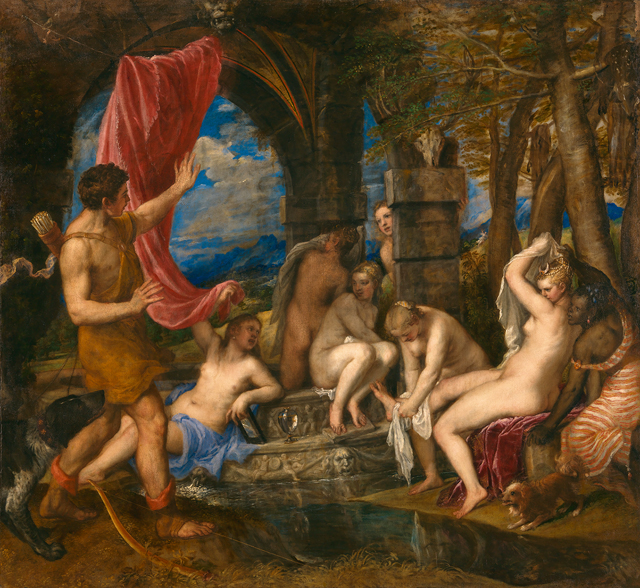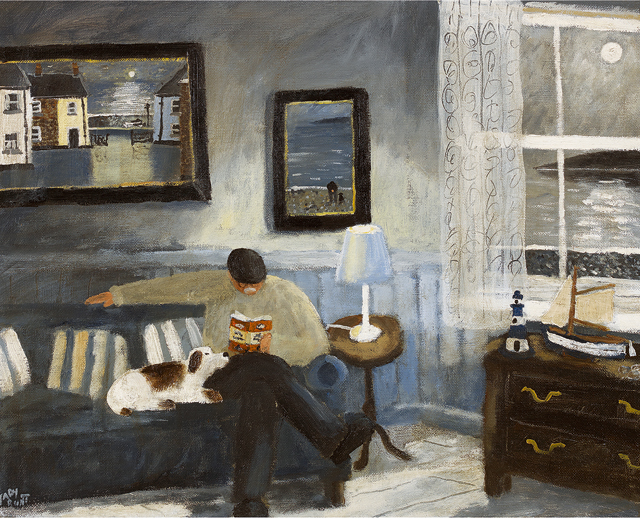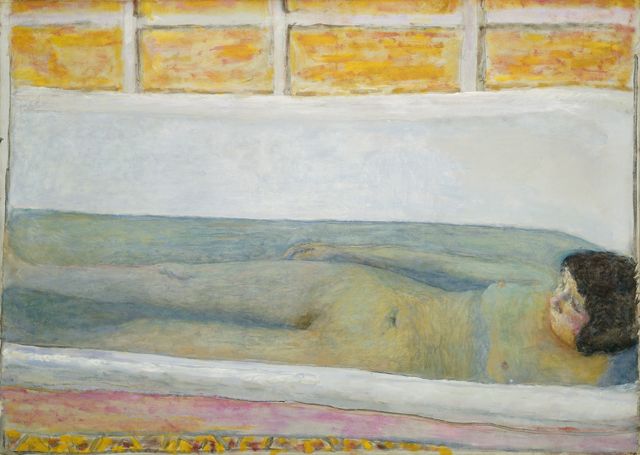My favourite painting: Jacqueline Wilson
'I looked at this painting and decided to write about a Victorian circus girl one day'


Acrobats at the Cirque Fernando (Francisca and Angelina Wartenberg), 1879, by Pierre-Auguste Renoir (1841–1919), 511⁄2in by 391⁄16in, Art Institute of Chicago.
Jacqueline Wilson says: Long ago, I endured a disastrous book tour of America (just two children and a shopper taking the weight off her feet at one venue). I had less than an hour to myself in Chicago, but I ran to the Art Institute, determined to see its famous Seurat. I only managed a few minutes in front of it because I was waylaid by Renoir’s painting of two circus girls. I’ve never admired Renoir’s salmon-pink fleshy ladies, but I loved these girls in their white-and-gold costumes, collecting oranges as a tribute to their performance. There’s such an immediacy about the painting that it was a surprise to discover it was painted in Renoir’s studio. The real girls, Francisca and Angelina, were 17 and 14, but the girls in the painting seem much younger. I looked at this painting and decided to write about a Victorian circus girl one day. And now I’ve written five books about circus star Hetty Feather.
Dame Jacqueline Wilson is a children’s author. The acclaimed stage adaption of her book Hetty Feather is running at the Duke of York’s Theatre, London WC2, until September 6.
John McEwen comments: Renoir went to school; he learned to sing; he decorated porcelain; and one fine day he began to paint,’ wrote Jean Renoir, the great film director, in his biographical masterpiece Renoir, My Father.
Pierre-Auguste Renoir was born in Limoges, his father a tailor, his mother a seamstress. The family moved to Paris when he was four and he always considered himself a Parisian. He was selected for the famous boy choir of Saint-Eustache. Its choirmaster, the young composer Charles Gounod, offered to give him a complete musical education. Instead, Renoir accepted an apprenticeship at a porcelain works and, by 15, was earning enough to help his parents buy a house in the suburbs for their retirement.
Mechanical reproduction was replacing hand-painted porcelain, so Renoir turned to cafe mural painting, with such success that he was asked to decorate the Folies Bergère, a job he refused because the costs were beyond his means. At this point, aged 20, he entered the Swiss painter Gleyre’s Parisian studio to train as an artist.
The year 1875 marked a milestone in French circus history with the opening of the permanent Cirque Fernando in Montmartre, not far from Renoir’s first Paris studio. Renoir referred to the young acrobats merely as ‘little girls’ (fillettes). In 1938, the younger of the two wrote a letter revealing their identities, Francisca and Angelina Wartenberg, part of an itinerant German troupe. ‘I am the greedy one, and collar most of the oranges the public pelted us with,’ wrote Angelina. Renoir found the circus lights too harsh, so the girls posed for him in his studio.
Sign up for the Country Life Newsletter
Exquisite houses, the beauty of Nature, and how to get the most from your life, straight to your inbox.

My favourite painting: Hannah Rothschild
Hannah Rothschild chooses her favourite painting for Country Life.

My favourite painting: Una Stubbs
Una Stubbs chooses her favourite painting for Country Life.
Country Life is unlike any other magazine: the only glossy weekly on the newsstand and the only magazine that has been guest-edited by HRH The King not once, but twice. It is a celebration of modern rural life and all its diverse joys and pleasures — that was first published in Queen Victoria's Diamond Jubilee year. Our eclectic mixture of witty and informative content — from the most up-to-date property news and commentary and a coveted glimpse inside some of the UK's best houses and gardens, to gardening, the arts and interior design, written by experts in their field — still cannot be found in print or online, anywhere else.
-
 How an app can make you fall in love with nature, with Melissa Harrison
How an app can make you fall in love with nature, with Melissa HarrisonThe novelist, children's author and nature writer Melissa Harrison joins the podcast to talk about her love of the natural world and her new app, Encounter.
By James Fisher
-
 'There is nothing like it on this side of Arcadia': Hampshire's Grange Festival is making radical changes ahead of the 2025 country-house opera season
'There is nothing like it on this side of Arcadia': Hampshire's Grange Festival is making radical changes ahead of the 2025 country-house opera seasonBy Annunciata Elwes
-
 My favourite painting: Allan Mallinson
My favourite painting: Allan MallinsonMilitary historian Allan Mallinson picks an image of 'faith, generosity and ultimate sacrifice'.
By Charlotte Mullins
-
 My Favourite Painting: Piet Oudolf
My Favourite Painting: Piet Oudolf'One cannot sense whether he is far out on the ocean or closer to shore, or what he may be watching or feeling in that moment as he stares towards the beach.’
By Country Life
-
 My Favourite Painting: Mary Plazas
My Favourite Painting: Mary Plazas'There is compassion, awe, humility, a knowing yet a questioning in the glistening eyes. It moves me, it inspires me beyond the need to know.’
By Country Life
-
 My favourite painting: Robert Kime
My favourite painting: Robert KimeRobert Kime shares his fondness for New Year Snow by Ravilious
By Country Life
-
 My Favourite Painting: Anna Pavord
My Favourite Painting: Anna PavordAnna Pavord chooses a picture which reminds her of where she grew up
By Country Life
-
 My favourite painting: The Duchess of Wellington
My favourite painting: The Duchess of WellingtonThe Duchess of Wellington chooses her favourite painting for Country Life.
By Country Life
-
 My favourite painting: Maureen Lipman
My favourite painting: Maureen LipmanMaureen Lipman chooses her favourite painting for Country Life.
By Country Life
-
 My favourite painting: Lauren Child
My favourite painting: Lauren ChildLauren Child chooses her favourite painting for Country Life.
By Country Life